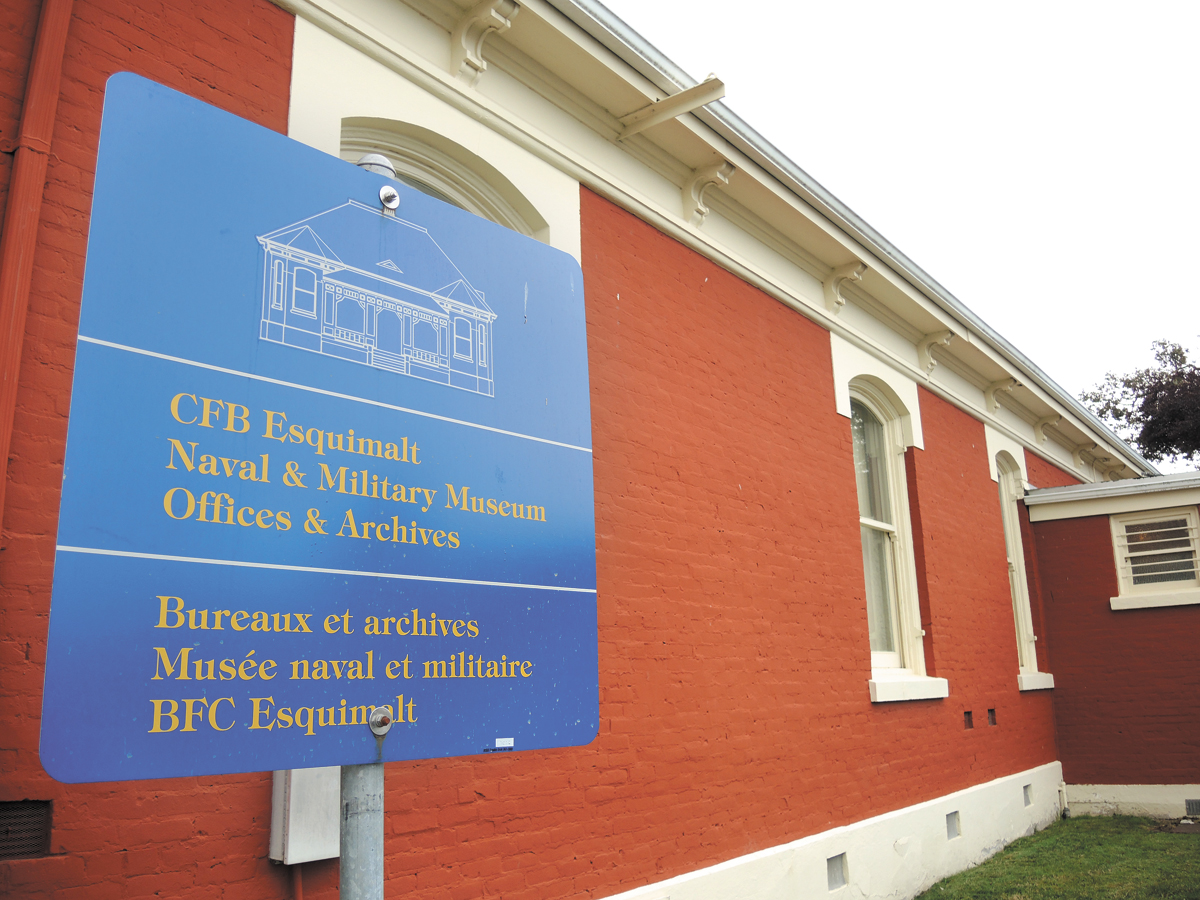‘Little Red School House’ named to historic sites list
By Lookout on Sep 04, 2019 with Comments 0

A sign at building N20 marks the offices and archives of the CFB Esquimalt Naval and Military Museum. The building was recently designated as an Historic Place by the Province of British Columbia. Between 1973 and 1984, the red brick building was used as a French-language school and previously served as a residence for admirals and base commanders in the early portion of the 20th century. Photo by Peter Mallett, Lookout
Peter Mallett, Staff Writer ~
The red-bricked office building for the CFB Esquimalt Naval and Military Museum has been designated a Historic Place by the Province of British Columbia.
Naden building number 20 currently houses the archives for the base museum, but 35 years ago it served a much different purpose.
Between 1973 and 1984, Cabin No. 20 was known to our Francophone community as “la petite école rouge” or “Little Red Schoolhouse” in English.
Back then, the building was an elementary school for up to 80 French-speaking students each year. It had a staff of four teachers who offered instruction from Kindergarten to Grade 6.
In October 1977 the school was officially named École Victor G Brodeur for the former Rear-Admiral who commanded the Pacific Fleet during the Second World War and used the building as his residence between 1932 and 1933. The building was designed by architect John Teague (1833-1902) to serve as a house for the Admiral, and in later years was also used as residence for Base Commanders.
In 1985 the little red schoolhouse was deemed too tiny a building to satisfy the demand from the Francophone community and operations were moved off-site to Harborview School.
Earlier this year, building N20 was named to the B.C. Register of Historic Places because of its cultural legacy and importance in the province’s history.
The announcement came by decree from the B.C. Legislative Assembly in March 2019 as part of Month of the Francophone celebrations in our province. It named N20 and 23 other sites across the province as Historic Places.
Gisèle Samson, a student’s assistant and volunteer for the Victoria Francophone Historical Society, says the announcement by the province was warmly received by Victoria’s Francophone community.
“The B.C. heritage designation is being applauded by the Francophone community and many others here in town and even further afield because of its huge significance to all of us,” said Gisèle Samson. “Many people who have moved to Victoria in more recent years are surprised when they learn about the history of the building.”
According to Samson, the French language school was initially opened at the base following equal-access-to-education rights to senior leadership during the late 1960s and early 1970s. Under pressure to provide services in both of Canada’s official languages, the decision was eventually made to accommodate the rights of French-speaking children from military families.
“Many children had been taught French in Ottawa and Halifax before moving with their [military] families to Esquimalt, but prior to 1973 the base did not have a school for Francophone children,” said Samson. “During my time as assistant teacher to the children in my classroom at École Victor-Brodeur on Head Street, I learned of our historical legacy and its connections to CFB Esquimalt.”
The process of recognizing the building got its start with an announcement by the Victoria Francophone Historical Society in the spring of 2018. It invited Francophones to participate in the Francophone Historic Places Recognition Project, funded by B.C. Heritage branch.
The purpose of the nominations process was to promote the heritage values of historic places that demonstrate the contribution of Francophones to the development of B.C.
The base and the historical society are planning to erect a bilingual marker in front of the building denoting its historical importance.
The base museum also hopes to celebrate the legacy of the school with a photo display at the front of adjacent building N29, which was also used by the school.
CFB Esquimalt Naval and Military Museum Exhibit Designer Clare Sharpe plans to add imagery of students and teachers from the school to N29’s windows. She is appealing to the military community and those who attended the school for class photographs and photos of students and teachers at work and play at the school. She encourages those interested in contributing photos to the project to contact her at Clare.Sharpe@forces.gc.ca
Filed Under: Top Stories
About the Author:





